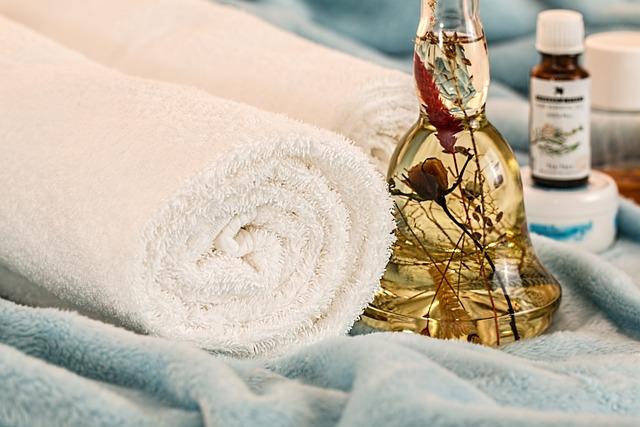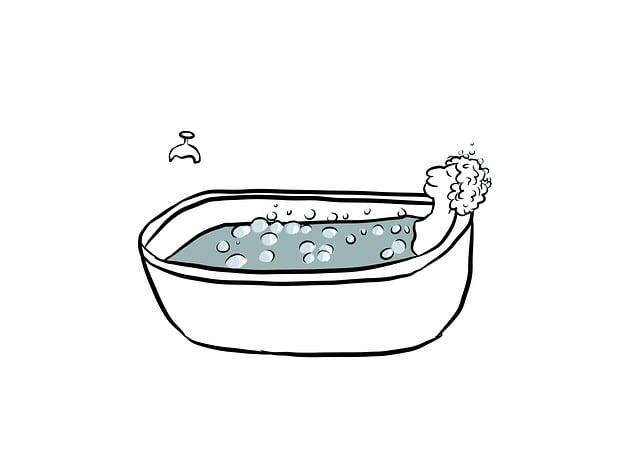Ice Bath vs Cold Plunge: Navigating Cold Therapy Options

Are you curious about the icy world of cold therapy? Seeking a refreshing way to enhance your recovery and boost your overall well-being? Look no further! In this article, we will dive deep into the chilling choices of ice baths and cold plunges, exploring their unique benefits and differences. Whether you’re an athlete seeking peak performance or simply an ice-cold enthusiast, we’ve got you covered. So grab your towel and get ready to navigate the world of cold therapy – the options await, and we’re here to guide you every step of the way.
Contents
- 1. Understanding the Science Behind Cold Therapy: Exploring the Various Benefits for Recovery and Performance Enhancement
- 2. The Pros and Cons of Ice Baths: Is this Traditional Cold Therapy Method Still the Gold Standard?
- 3. Exploring the Cold Plunge Option: How Does it Compare to Ice Baths and What Are its Unique Benefits?
- 4. Tailoring Cold Therapy to Your Needs: Factors to Consider When Choosing Between Ice Baths and Cold Plunges
- 5. Safety First: Tips and Precautions to Maximize the Effectiveness and Minimize Risks of Cold Therapy
- 6. Unveiling the Myth: Do Ice Baths and Cold Plunges Really Improve Muscle Recovery and Reduce Inflammation?
- 7. Cold Therapy Methods for Athletes: Which Option is Recommended for Muscular Development and Enhanced Performance?
- 8. Beyond the Physical: Understanding the Psychological Effects of Cold Therapy and its Impact on Mental Well-being
- 9. Getting Creative: Exploring Alternative Cold Therapy Options and Techniques for Unique and Specific Benefits
- 10. Finding Your Chill: Personal Experiences and Expert Recommendations to Help You Choose the Right Cold Therapy Option for You
1. Understanding the Science Behind Cold Therapy: Exploring the Various Benefits for Recovery and Performance Enhancement
When it comes to cold therapy options, two popular choices are ice baths and cold plunges. Both methods have their own unique benefits and understanding the science behind them can help you make an informed decision. Let’s delve into the benefits of each, so you can navigate cold therapy options effectively.
Ice Baths: Cooling Your Body for Powerful Recovery
Ice baths involve completely submerging yourself in a tub of cold water, usually ranging from 50 to 59 degrees Fahrenheit. This cold temperature causes your blood vessels to constrict, redirecting blood flow away from your extremities and towards your vital organs. As a result, your body engages in a series of physiological responses that promote recovery and enhance performance:
- Reduced inflammation: the cold temperature helps reduce inflammation by constricting blood vessels and minimizing the flow of inflammatory substances to the affected area.
- Improved muscle recovery: the constriction of blood vessels helps remove waste products such as lactic acid, which builds up during intense exercise. This promotes muscle repair and speeds up recovery.
- Enhanced immune function: exposure to cold stimulates the production of white blood cells, boosting your immune system’s ability to fight off infections.
Cold Plunges: Harnessing the Power of Quick Temperature Changes
Cold plunges, on the other hand, involve immersing yourself in water that is significantly colder than ice baths, often below 45 degrees Fahrenheit. This drastic drop in temperature provides a unique set of benefits for both recovery and performance enhancement:
- Faster recovery from intense workouts: the extreme cold temperature of cold plunges helps reduce muscle inflammation and speeds up the recovery process, allowing athletes to bounce back quicker from strenuous training sessions.
- Increased alertness and mental clarity: the shock of the cold water improves blood circulation and stimulates the release of endorphins, leaving you feeling refreshed, alert, and focused.
- Enhanced cardiovascular function: the rapid drop in body temperature during a cold plunge triggers vasoconstriction, which improves blood flow and cardiovascular function.
In conclusion, both ice baths and cold plunges offer a myriad of benefits for recovery and performance enhancement. The choice between the two ultimately depends on your personal preference, tolerance for cold temperatures, and desired outcomes. Whichever option you choose, integrating cold therapy into your routine can help optimize your physical and mental well-being.
2. The Pros and Cons of Ice Baths: Is this Traditional Cold Therapy Method Still the Gold Standard?
Cold therapy has long been used as a method of recovery and rejuvenation in various forms. Among the most popular options are ice baths and cold plunges. Both methods involve immersing the body in chilling temperatures, but they differ in terms of technique and benefits. In this article, we aim to navigate the realm of cold therapy by examining the pros and cons of ice baths.
Pros of Ice Baths:
- Reduced inflammation: The topical application of extreme cold helps constrict blood vessels, reducing inflammation in muscles and joints. This can be beneficial for athletes recovering from intense training sessions or individuals seeking relief from arthritis or other inflammatory conditions.
- Enhanced recovery: Ice baths have been proven to accelerate the recovery process by aiding in the removal of lactic acid, reducing muscle soreness, and improving overall circulation. It can help athletes bounce back quicker, ready to take on their next challenge.
- Mental clarity: The shock of icy water stimulates the release of endorphins, creating a natural mood boost and increased mental alertness. Many individuals find that ice baths help them stay focused and energized throughout the day.
Cons of Ice Baths:
- Uncomfortable experience: Let’s face it; immersing oneself in freezing water can be a challenging and uncomfortable ordeal. The initial shock of the cold can feel unpleasant, and the prolonged exposure can be intolerable for some individuals.
- Potential skin damage: Excessive exposure to cold can cause skin damage, such as frostbite or chilblains. Individuals with sensitive or compromised skin should exercise caution and limit their time in ice baths.
- Not suitable for everyone: Ice baths are not recommended for individuals with certain medical conditions, such as Raynaud’s disease or heart problems. It is always best to consult with a healthcare professional before incorporating ice baths into your routine.
While ice baths have long been regarded as the gold standard in cold therapy, it is essential to evaluate the potential benefits and drawbacks before diving in. Whether you choose ice baths, cold plunges, or other cold therapy options, finding the method that works best for your body and goals is paramount.
3. Exploring the Cold Plunge Option: How Does it Compare to Ice Baths and What Are its Unique Benefits?
The cold plunge is a new and exciting option in the world of cold therapy, and it’s worth exploring how it compares to traditional ice baths. While both options involve exposing the body to cold temperatures, there are some key differences that make the cold plunge a unique and appealing choice.
Firstly, let’s talk about convenience. Ice baths typically require a large amount of ice and a tub big enough to fully submerge your body. This can be time-consuming and require preparation. On the other hand, a cold plunge is often a pre-set option in saunas or cryotherapy chambers, making it easily accessible and hassle-free.
In terms of temperature, the cold plunge is often cooler than traditional ice baths. While ice baths typically range from 50-59 degrees Fahrenheit, the cold plunge can go as low as 35 degrees Fahrenheit. This extra cold temperature can provide a more intense and invigorating experience, triggering a strong physiological response in the body.
Additionally, the cold plunge offers a unique benefit in terms of muscle recovery. The rapid drop in temperature encourages vasoconstriction, which can help reduce muscle inflammation and soreness. This makes the cold plunge an ideal option for athletes or individuals looking to accelerate their recovery process.
In summary, while ice baths have their own advantages, the cold plunge offers a convenient and more intense cold therapy option. With its lower temperature and potential benefits for muscle recovery, it’s worth considering the cold plunge as a refreshing and beneficial addition to your wellness routine.
4. Tailoring Cold Therapy to Your Needs: Factors to Consider When Choosing Between Ice Baths and Cold Plunges
Factors to consider when choosing between ice baths and cold plunges for cold therapy can greatly impact the effectiveness and overall experience. While both methods involve the application of extreme cold to stimulate the body’s natural healing response, there are some key differences to consider.
1. Temperature Range: Ice baths typically involve immersing the body in water at a temperature of around 5-10 degrees Celsius (41-50 degrees Fahrenheit), while cold plunges are usually colder, ranging from 0-4 degrees Celsius (32-39 degrees Fahrenheit). The lower temperature of cold plunges may provide a more intense cold therapy experience.
2. Duration: Ice baths are typically recommended for longer durations, ranging from 10-20 minutes, while cold plunges are often shorter, ranging from 2-5 minutes. The shorter duration of cold plunges may be more suitable for individuals who are new to cold therapy or prefer a quicker session.
3. Accessibility: Ice baths can be easily created at home using a bathtub filled with ice and water. On the other hand, cold plunges may require specialized equipment such as a cold plunge pool or a specialized facility that offers this service. Considering the accessibility factor is crucial when incorporating cold therapy into your routine.
4. Personal Preference: Ultimately, personal preference plays a significant role in choosing between ice baths and cold plunges. Some individuals may find the shock of the cold water in a cold plunge invigorating and prefer the quick, intense experience. Others may prefer the gradual cooling effect of an ice bath. It’s important to listen to your body and choose the method that feels most comfortable and effective for you.
In summary, when choosing between ice baths and cold plunges for cold therapy, factors such as temperature range, duration, accessibility, and personal preference should be considered. Experimenting with both methods can help determine which option best suits your needs and goals for cold therapy. Remember, always consult with a healthcare professional before incorporating cold therapy into your routine to ensure it is safe and appropriate for you.
5. Safety First: Tips and Precautions to Maximize the Effectiveness and Minimize Risks of Cold Therapy
When it comes to cold therapy, there are various options available, from ice baths to cold plunges. Both these methods can provide numerous benefits, such as reducing inflammation, speeding up recovery, and improving mental clarity. However, it’s crucial to prioritize safety to ensure a positive and effective experience. Here are some tips and precautions to consider:
- Know your limits: Cold therapy can be intense, so it’s important to listen to your body and start gradually. Begin with shorter sessions and lower temperatures, allowing your body to adapt over time.
- Stay hydrated: Cold therapy can cause increased heart rate and blood pressure, so it’s vital to stay hydrated before and after each session. Drink plenty of water to support your body’s natural equilibrium.
- Dress appropriately: In order to maximize the benefits of cold therapy, wear comfortable clothing that allows for maximum exposure to the cold. Opt for swimwear or clothing made from breathable and moisture-wicking materials.
- Follow proper techniques: Whether you’re opting for an ice bath or cold plunge, ensure that you enter and exit the cold water safely. Take slow, controlled breaths during the session, allowing your body to adjust to the cold gradually.
By following these tips and taking necessary precautions, you can enhance the effectiveness of cold therapy and minimize any potential risks. Remember to always prioritize your safety and consult with a healthcare professional if you have any concerns or medical conditions.
6. Unveiling the Myth: Do Ice Baths and Cold Plunges Really Improve Muscle Recovery and Reduce Inflammation?
Ice baths and cold plunges have long been touted as effective post-workout recovery methods, but do they live up to the hype? This article aims to debunk the myth by exploring the science behind these cold therapy options and their impact on muscle recovery and inflammation reduction.
1. Temperature: Ice baths typically involve immersing the body in water chilled to temperatures around 10 to 15 degrees Celsius, while cold plunges generally consist of water at a slightly higher temperature, ranging from 15 to 20 degrees Celsius. The significant difference in temperature can affect the body’s response and subsequent benefits.
2. Muscle Recovery: Cold therapy, including ice baths and cold plunges, is believed to constrict blood vessels and reduce inflammation, thus aiding in muscle recovery. However, the scientific evidence supporting this claim is mixed. While cold exposure may temporarily reduce swelling and numb pain receptors, it may not significantly improve muscle recovery compared to other forms of therapy.
3. Inflammation Reduction: Cold therapy’s ability to reduce inflammation is a hotly debated topic. Some studies suggest that cold exposure can enhance the body’s anti-inflammatory response, while others provide conflicting results. It is important to note that while cold therapy may provide short-term relief, it might not address the root cause of chronic inflammation.
4. Individual Variations: It’s crucial to understand that the effects of ice baths and cold plunges on muscle recovery and inflammation reduction can vary depending on the individual. Factors such as age, fitness level, and overall health can influence how the body responds to cold therapy. Therefore, it is advisable to consider personalized factors before integrating these practices into your recovery routine.
In conclusion, while ice baths and cold plunges can offer some benefits in terms of muscle recovery and inflammation reduction, their effectiveness may vary from person to person. It’s essential to experiment, listen to your body, and consult with a healthcare professional or trainer to determine the best cold therapy option for your specific needs. Remember, there are alternative recovery methods that might be equally effective and more comfortable for those who find cold therapy challenging.
7. Cold Therapy Methods for Athletes: Which Option is Recommended for Muscular Development and Enhanced Performance?
In the world of athletics, cold therapy has become a popular method for promoting muscular development and enhancing performance. Two common options for athletes seeking cold therapy are ice baths and cold plunges. Both methods involve immersing the body in icy water, but there are some key differences to consider when choosing which option is best for you.
Ice Baths:
- Ice baths typically involve filling a tub or container with cold water and adding ice to lower the temperature.
- The cold water helps to reduce inflammation, numb the muscles, and accelerate the recovery process after intense physical activity.
- Ice baths are often recommended for athletes who experience muscle soreness or injuries, as the cold temperature constricts blood vessels, reducing swelling and pain.
Cold Plunges:
- Cold plunges, on the other hand, utilize water at an even lower temperature than ice baths, and there is no need for adding ice.
- These plunges offer a more intense cold therapy experience, which helps to stimulate the nervous system, improve circulation, and boost overall recovery.
- Athletes who are looking to enhance their performance and increase their endurance may benefit from incorporating cold plunges into their routine.
Ultimately, the choice between ice baths and cold plunges depends on your specific goals and preferences. If you’re primarily seeking relief from muscle soreness or injury, ice baths may be the more suitable option. However, if you’re aiming for a more intense recovery experience and performance enhancement, cold plunges might be the way to go. Regardless of which option you choose, it’s important to consult with a healthcare professional or athletic trainer to ensure you’re using cold therapy safely and effectively.
8. Beyond the Physical: Understanding the Psychological Effects of Cold Therapy and its Impact on Mental Well-being
Cold therapy, such as ice baths and cold plunges, has gained popularity in recent years for its physical benefits. However, it is important to understand that these practices can also have a profound impact on our mental well-being. By subjecting ourselves to extreme cold temperatures, we not only stimulate our body’s natural healing mechanisms but also trigger a cascade of psychological effects.
One of the primary psychological effects of cold therapy is the release of endorphins, commonly known as “feel-good” hormones. These chemicals are responsible for reducing pain and increasing feelings of pleasure and well-being. When we immerse ourselves in icy water or expose our bodies to cold temperatures, our brain releases endorphins as a response to the stress. This not only helps to alleviate physical discomfort but also uplifts our mood and promotes a sense of calmness and relaxation.
Another psychological benefit of cold therapy is its ability to boost mental resilience. When we willingly expose ourselves to uncomfortable sensations such as intense cold, our mind learns to adapt and overcome challenges. This resilience translates into our daily lives, allowing us to better cope with stress, adversity, and discomfort. By regularly incorporating cold therapy into our routine, we can cultivate mental strength and develop a greater sense of control over our emotions.
Moreover, the invigorating nature of cold therapy can help combat feelings of depression and anxiety. Cold exposure stimulates the sympathetic nervous system, triggering an increase in heart rate and adrenaline production. This heightened state of physiological arousal can have a positive impact on our mental state, promoting alertness, clarity, and improved mood. Additionally, the shock of cold temperature can disrupt negative thought patterns and serve as a powerful distraction, redirecting our focus away from rumination and anxiety.
9. Getting Creative: Exploring Alternative Cold Therapy Options and Techniques for Unique and Specific Benefits
In the world of cold therapy, there are endless options to explore beyond the traditional ice bath. If you’re looking to switch up your cold therapy routine and reap unique and specific benefits, it’s time to dive into alternative techniques like the cold plunge.
While the ice bath involves submerging your body in a tub filled with ice-cold water, the cold plunge takes a slightly different approach. This technique involves quickly immersing yourself in water that is even colder than an ice bath, typically around 45 degrees Fahrenheit or below. The intense cold shock encourages your body to adapt and triggers various physiological responses that can have remarkable benefits for your overall well-being.
Why choose the cold plunge over an ice bath? One of the biggest advantages is time. While ice baths typically require a prolonged period of submersion to achieve desired results, the cold plunge can offer similar benefits with just a brief dip. The intense cold stimulates your body’s natural healing mechanisms, helping to reduce inflammation, enhance circulation, and boost your immune system.
If you’re ready to dive into the world of alternative cold therapy options, consider incorporating the cold plunge into your routine. Experiment with different temperature settings, exposure times, and even combining it with contrast therapy for added benefits. Always remember to gradually acclimate your body to colder temperatures and listen to your body’s signals to ensure a safe and enjoyable experience.
10. Finding Your Chill: Personal Experiences and Expert Recommendations to Help You Choose the Right Cold Therapy Option for You
When it comes to cold therapy, two popular options are ice baths and cold plunges. Both methods offer various benefits but understanding the differences can help you choose the right option for your needs. Here, we’ll explore personal experiences and expert recommendations to help you navigate these cold therapy options.
Ice Baths: Ice baths involve immersing your body in a tub filled with cold water (around 50 degrees Fahrenheit) and ice for a specific duration, usually between 10 to 20 minutes. This method is commonly used by athletes and fitness enthusiasts to reduce inflammation, aid muscle recovery, and improve overall performance. It can also help relieve soreness and alleviate symptoms of certain medical conditions.
Cold Plunges: Cold plunges are similar to ice baths but typically involve longer exposure to colder water, often around 40 degrees Fahrenheit. These plunges are often done outdoors, in natural bodies of water like lakes or rivers, but there are also specialized plunge pools available. Cold plunges have been associated with various health benefits, including improved circulation, increased immunity, and enhanced mood. The shock of cold water is believed to activate the body’s natural healing mechanisms.
Deciding between ice baths and cold plunges ultimately depends on your preferences and desired outcomes. Some prefer the convenience of an ice bath, where you have control over the temperature and duration, while others enjoy the invigorating experience of a cold plunge in nature. It’s important to start gradually, especially if you’re new to cold therapy, and remember to always listen to your body and consult a healthcare professional if you have any concerns.
In conclusion, when it comes to cold therapy, the choice between an ice bath and a cold plunge ultimately depends on your personal preferences and goals. Both methods offer numerous benefits, from reduced inflammation to enhanced muscle recovery. Whether you’re an athlete looking for performance improvement or someone seeking relief from chronic pain, cold therapy can be a powerful tool in your health and wellness arsenal. Experiment with both options and see which one resonates with you. Remember, consistency is key, so make cold therapy a regular part of your routine. Stay cool, stay focused, and unlock the potential of cold therapy for your body and mind.














